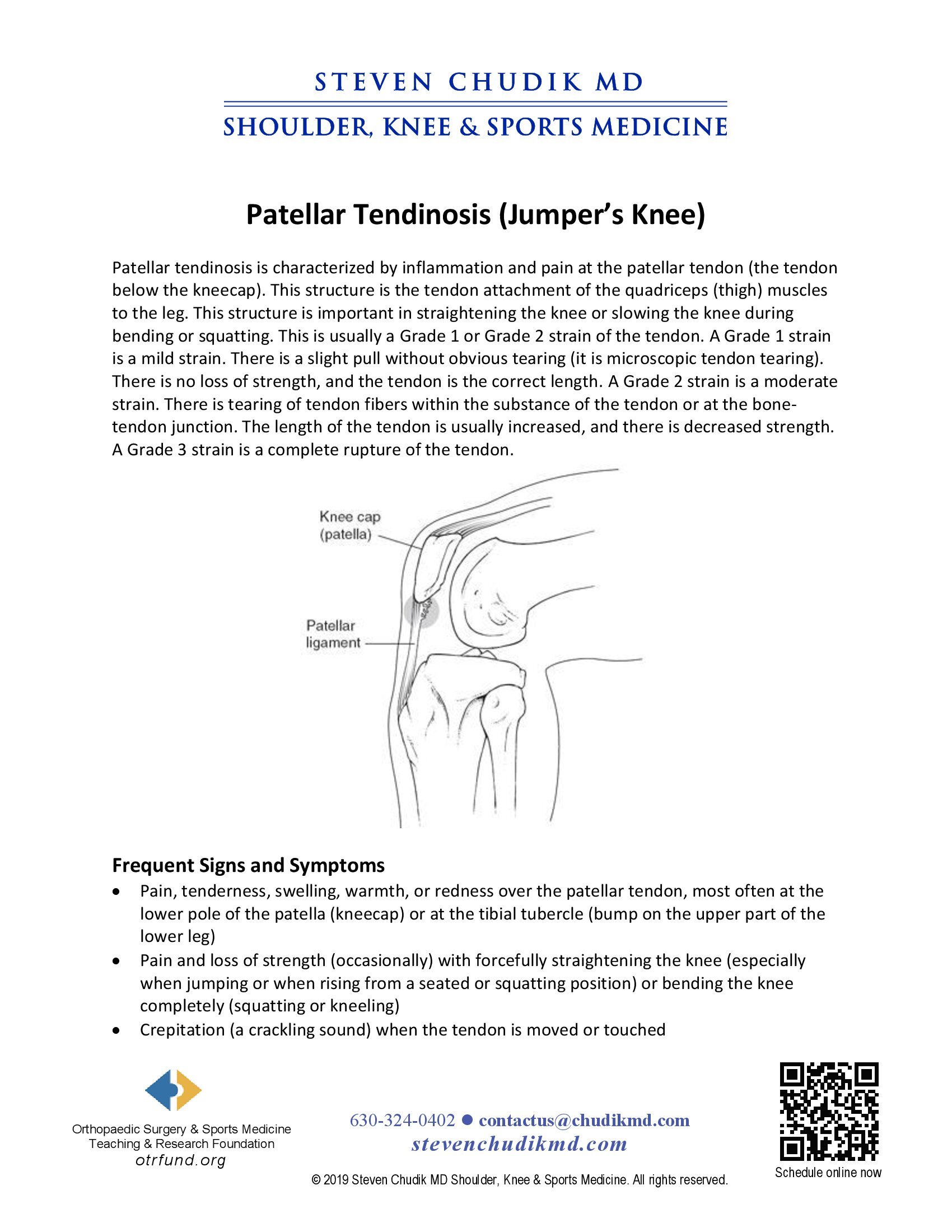 A race against time: Frantz's passion versus prudence
A race against time: Frantz's passion versus prudence
Home / Knee Surgeon Chicago Illinois / Patellar Tendinosis
Patellar tendinosis is characterized by inflammation and pain at the patellar tendon (the tendon below the kneecap). This structure is the tendon attachment of the quadriceps (thigh) muscles to the leg. This structure is important in straightening the knee or slowing the knee during bending or squatting. This is usually a Grade 1 or Grade 2 strain of the tendon. A Grade 1 strain is a mild strain. There is a slight pull without obvious tearing (it is microscopic tendon tearing). There is no loss of strength, and the tendon is the correct length. A Grade 2 strain is a moderate strain. There is tearing of tendon fibers within the substance of the tendon or at the bone-tendon junction. The length of the tendon is usually increased, and there is decreased strength. A Grade 3 strain is a complete rupture of the tendon.
Initial treatment consists of medication and ice to relieve the pain, stretching and strengthening exercises of the quadriceps and hamstring muscles, and modification of the activity that initially caused the problem. These all can be carried out at home, although referral to a physical therapist or athletic trainer for further evaluation and treatment may be helpful. Rarely, a leg cast may be recommended to 10 to 14 days to immobilize the tendon and allow the inflammation to settle down. This condition is usually curable within six weeks if treated appropriately with conservative treatment and resting of the affected area.
Uncommonly, crutches may be needed for the first few days to weeks until there is good control of the quadriceps muscles and no limp exists. An arch support (orthotic) or a patellar tendon brace may be prescribed to reduce stress to the tendon. Surgery to remove the inflamed tendon lining or degenerated tendon tissue is rarely necessary and is only considered after at least six months of adequate rehabilitation and rest.
Learn More
 “Dr. Chudik, Thanks for allowing me to achieve my goals and lifelong dreams.”
“Dr. Chudik, Thanks for allowing me to achieve my goals and lifelong dreams.”
Dr Steven Chudik founded OTRF in 2007 to keep people active and healthy through unbiased education and research. Click to learn about OTRF’s free programs, educational opportunities and ways to participate with the nonprofit foundation.
1010 Executive Ct, Suite 250
Westmont, Illinois 60559
Phone: 630-324-0402
Fax: 630-920-2382
(New Patients)
550 W Ogden Ave
Hinsdale, IL 60521
Phone: 630-323-6116
Fax: 630-920-2382
4700 Gilbert Ave, Suite 51
Western Springs, Illinois 60558
Phone: 630-324-0402
Fax: 630-920-2382

© 2025 © 2019 Copyright Steven Chudik MD, All Rights Reserved.
